Man who finds missing links of freedom fighters
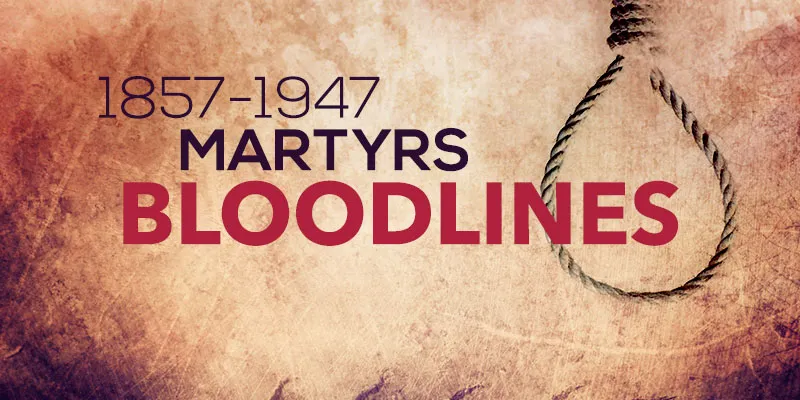
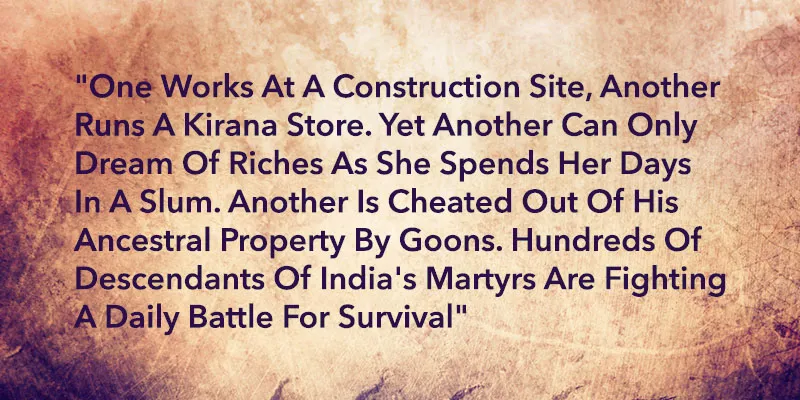
It is a potent combination of sorts. The reassuring rays of the soft winter sun warming you as you patiently wait in a sea of humanity, as it were, along the grand Rajpath in New Delhi, and to your pleasant surprise marigold and rose petals shower down as three IAF helicopters hover above in a ‘V’ formation. Even as you pull your sweater tight over your chest, you know the goose bumps are not the result of the January chill.
It is indeed difficult to escape this bewitching moment.
For those of us who have spent our childhood days in front of Doordarshan on Republic Day, it was no less mesmerizing as Ustad Bismillah Khan’s shehnai would appear to slowly lift the fog off India Gate from where the brave came marching past on the Rajpath.
On one such cold morning in 2006, an extraordinary old man bundled up in a thick shawl and woolen cap sat upright on his wheel chair listening to the live commentary of the Republic Day parade on All India Radio. As the heavenly strains of shehnai from the radio reached him, his eyes welled up, and he remarked in his characteristic child-like response, “Dekho un kambakhton ko, Rajpath par Gantantra Divas ka parade ho raha hai, meri shahnai baja rahe hain aur mujhe hi nyota nahi diya (look at those good-for-nothing people, they are playing my recording on Republic Day but they did not think of inviting me).”
A witness to this heart-breaking moment, journalist and activist Shivnath Jha tells me, “We stood silently hanging our heads in shame.” Shivnath and his wife, Neena, had gone to Bismillah Khan’s house in Varanasi to get the proofs of a monograph on his life and music approved. “We were mute spectators to this emotional outburst,” he adds.
This was no tantrum by an artiste spoilt under the patronage of the powers that be. It was a pronouncement of how genuine artistes and creative people are treated by an indifferent administration. Bharat Ratna Bismillah Khan had performed from the ramparts of the Red Fort on the eve of India’s independence in 1947, which became a tradition of sorts till the 60s on the insistence of India’s first Prime Minister Pandit Jawaharlal Nehru. But by the time Bismillah Khan’s end came near he seemed a broken man besieged by financial and family woes.
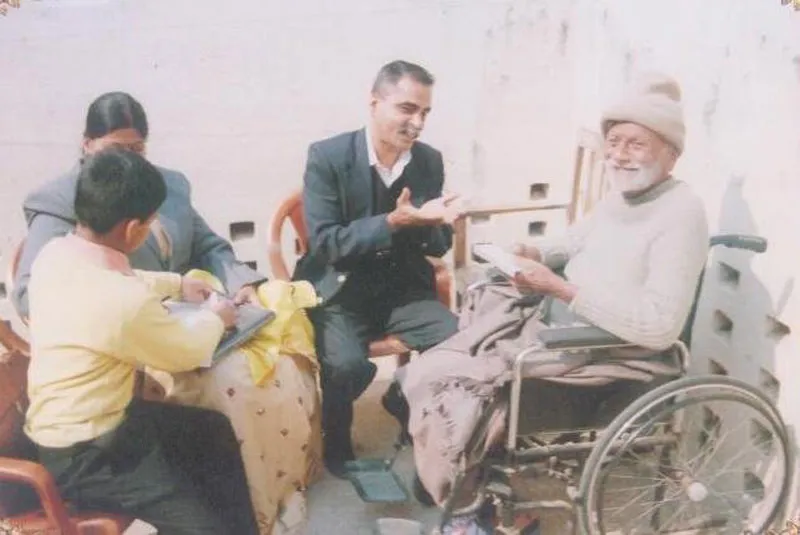
The making of an ‘andolan’
Working on the monograph since 2002, Shivnath had become emotionally attached to the shehnai legend and his family. His mission was to help the Ustad tide over this financial crisis. “My wife and I had come to the banks of the river Ganga in Varanasi in search of salvation and in quest for valour and pride. We found our purpose in helping one of the country’s finest musicians, and thus was launched a national movement, ‘Andolan Ek Pustak Se’ (revolution through a book), which published the monograph on the life and times of Ustad Bismillah Khan,” recalls Shivnath.
The Ustad released the monograph on his 91st birthday on March 21, 2006. The Founder of Sulabh Sanitation Movement, Dr Bindeshwar Pathak, presented a three-kilogram silver shehnai and Rs 1.5 lakh to the maestro. Following a request by Shivnath, the Ministry of Home Affairs invited the Ustad to perform at India Gate in New Delhi as it was his wish to pay homage to the countless and unknown martyrs of his homeland. But as fate would have it, Bismillah Khan was hospitalized and could not perform this historic feat. He passed away a few days later on August 21.
The unfulfilled last wishes of Bismillah Khan gave Shivnath a new purpose. He decided to publish one book every year to rehabilitate one family of the descendants of forgotten heroes of 1857 and 1947 through the proceeds of the book. It was his way of paying homage to the unsung heroes.

This has been a life-long project of Shivnath’s and in nine years he has been successful in tracing 45 descendants of martyrs who were living in anonymity and destitution. These include the bloodlines of Rani Jhansi, Tatya Tope, Udham Singh, Ram Prasad Bismil, Satyendranath Bose, Chandrashekhar Azad, Khudiram Bose, the last Mughal Emperor Bahadur Shah Zafar, and many more.
During the course of tracing the bloodlines, Anita, the grand daughter-in-law of martyr Satyendranath Bose, hugged his wife and cried, saying, “During the past several decades, no one from the government or otherwise has ever visited us to know whether the descendants of Satyen Bose are alive or dead.”
“Only Nehru and Gandhi did not get us freedom, thousands of unknown freedom fighters laid down their lives in the struggle for independence,” remarks Shivnath, adding, “Does anyone know who their descendents are and how they are living?”
As author Milan Kundera wrote, “A nation which loses the awareness of its past gradually loses itself.” To know who we are it is important to know where we come from. “Today, children do not even know the names of their grandparents, how will they ever understand and relate to the stories of these unsung martyrs?” asks Shivnath. Keeping their stories buried in history text books, he feels, is not the answer.
Talking about the ‘marketing of martyrs’ by different political parties, Shivnath feels it implies that some freedom fighters are more equal than others. “I am not politicizing this issue or blaming the government. I feel it is the apathy of our society which places no value on our heritage.” He appeals to the society in general and business owners in particular to direct their philanthropy in this direction.
Untold stories
Everyone knows of Bhagat Singh, but what do we know about the other two youths who were also hanged with him -- Satyasheel Rajguru and Sukhdev? Or for that matter Batukeshwar Dutt, who outlived his other friends and saw the sun rise over a free India?
Batukeshwar Dutt (or BK Dutt), was yet another freedom fighter and an associate of Bhagat Singh and Chandrashekhar Azad. The revolutionaries were imprisoned after they threw a bomb in the Central Legislative Assembly. But Batukeshwar was shifted to another prison. Bhagat Singh wrote a letter to Batukeshwar’s sister saying how he was in the dark about the whereabouts of his friend, and asking her not to come to Lahore as it would be a wasted trip.
In fact, Battu, as he was fondly called by fellow revolutionaries, was one of the few who lived to see his country free from British rule. His daughter Bharti Bagchi, whom Shivnath interviewed for a radio series on Indian freedom fighters, told him, “I am proud to be his daughter. Bhagat Singh’s mother considered him like a son and would say that though she lost her own son, Battu will show how a revolutionary needn’t always go down fighting, he can live and contribute to the country’s welfare as well.”
But sadly, independent India did not accord him any recognition and he spent his last days in penury. Batukeshwar died of a prolonged illness in 1965 in Delhi. Bagchi, who is a professor in Patna, told Shivnath, “I am unfortunate to have lived with him only for 14 years…I could not understand so many things from his revolutionary days that he talked about.” She pointed out that school syllabus should teach children about these revolutionaries, and recited her favourite couplet on the martyrs lest we forget their contribution.
“Tum nahi samjho key yeh azadi yu hi mili hain/ har kali is baag ki khuch khoon pee kar khili hai/ hamare mahal yeh shahido ke chhati par hi khade hain…” (do not think we got freedom on a plate/each and every bud in this garden has bloomed on the blood of martyrs/our buildings and palaces are standing on the graves of these brave men and women).
Another such lesser known story is that of Udham Singh, who avenged the Jallianwala Bagh massacre in Amritsar by assassinating Michael O’Dwyer, who was the Governor of Punjab then. Udham Singh was a prominent member of the Ghadar Party along with Bhagat Singh and others and would often travel abroad to organize Indians oversees to overthrow the British. On one such visit to London, he hid a pistol in a book and shot O’Dwyer at the Central Asian Society at Caxton Hill. Udham Singh was hanged in London following a trial.
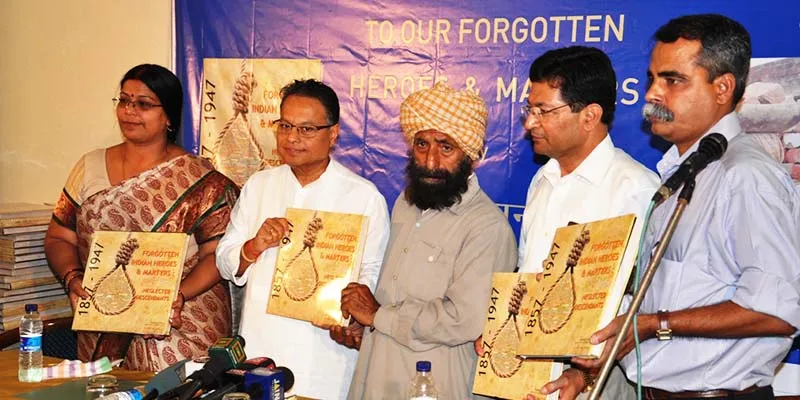
Shivnath found Jeet Singh, Udham Singh’s great grand nephew working as a daily wage labourer at a construction site in Sangrur district in Punjab, Udham Singh’s hometown. Shivnath approached the Founder of the Lokmat media group, Vijay Darda, to help Jeet Singh. On the occasion of Baisakhi festival, Darda handed over a cheque of Rs 11.5 lakh collected through contributions by his media group and from some individual philanthropists, besides Rs 100,000 by Prof Ram Prakash, member of Rajya Sabha. Shivnath’s book, ‘Forgotten Indian Heroes and Martyrs: Their Neglected Descendants,’ was also launched.
If you liked Indian history in school, you may perhaps recognize Ram Prasad Bismil. That’s right, he was hanged in the Kakori train dacoity case. Shivnath traced his great grandson Bijendra Singh. In 1947, just after independence, Bijendra was granted 70 acres of land by the Madhya Pradesh government on the recommendation of then President Dr Rajendra Prasad. But later the entire land was grabbed by local goons. They have been crying for justice ever since.
In 2013, Shivnath published another book, ‘Forgotten Heroes and Martyrs of India's Freedom Movement’ (fifth in the series of ‘Aandolan Ek Pustak Se’) to help Bijendra Singh. Again, the Founder of Sulabh Sanitation Movement, Dr Bindeshwar Pathak, handed over a cheque worth Rs 200,000 to Bijendra for his daughter’s wedding.
His recent book, ‘1857-1947 Forgotten Heroes and Martyrs of India’s Freedom Movement,’ comprises pictorial details of over 200 revolutionaries, heroes and martyrs of that period who were hanged, shot dead or died in various jails.
The mutiny martyrs
Shivnath was also successful in tracing some descendants of the 1857 revolutionaries like Rani Jhansi, Tatya Tope and even Bahadur Shah Zafar, the last Mughal Emperor.
In 2007, Shivnath met Vinayak Rao Tope, the third generation descendants of Tatya Tope, who helped Rani Lakshmibai annex Gwalior. He was, however, executed by the British in 1859. Vinayak Rao Tope lived with his family in Bithur, 37 km from Kanpur, and ran a small grocery shop. Former Bihar Chief Minister Lalu Prasad Yadav offered Vinayak Rao’s two daughters jobs in the Railways.

In a conversation with YourStory from Bithur, Vinayak Rao recalled stories by his father who would tell him that they never disclosed to any stranger that they were Tatya Tope’s descendants for the fear of the British. “My father would tell us that they were scared the British would kill them for being the family of a revolutionary. We had some swords and daggers of Tatya ji’s but we gave them away to the government museum.”
One would think that because emperors had large harems, it would not be difficult to trace their bloodline. But in 2009 when Shivnath found Sultana Begum, the great grand daughter-in-law of Mughal Emperor Bahadur Shah Zafar in Howrah near Kolkata it was indeed difficult to believe that a royal descendant would ever end up in a slum.
The poet emperor Bhadur Shah Zafar was buried in Burma where he was sent off by the British after they squashed what they referred to as the mutiny of 1857. More than 150 years after his death there have been many petitions and attempts to bring his remains to India where his grave in Mehrauli, Delhi, still awaits his soul. Perhaps when he wrote the following lines in a ghazal, he had known that his soul would forever pine for his beloved land.
“Kitna hai badnaseeb Zafar dafn ke liye/Do gaz zameen bhi na mili koo-e-yaar mein” (how unlucky is Zafar, he did not even find two yards to be buried in the land of his beloved).
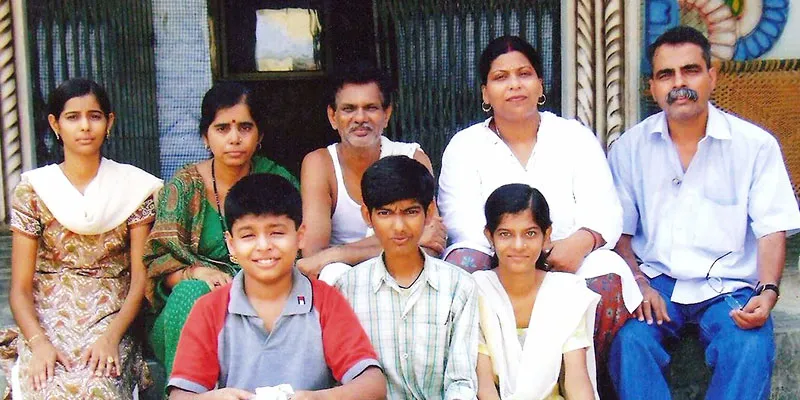
Sultana Begum runs a tea-stall to earn a living. With the proceeds of his yet another book, a pictorial coffee-table book in honour of India's Prime Ministers, ‘Prime Ministers of India: Bharat Bhaagya Vidhaata-1947-2009,’ Shivnath helped her financially.
According to Shivnath there are 1,70, 545 freedom fighters who are drawing a monthly pension of around Rs 11,331 from the central government. In addition to this they are also entitled to around Rs 7,000-9,000 from the state government. On an average, the government spends Rs 645 crores per annum on freedom fighters. “It is 68 years since India became independent and would you believe when I say that many of those who are drawing the freedom fighter pension are 72 to 78 years old.” he states.
Boy from Darbhanga
It is this questioning mind that has led Shivnath on his quest to fulfill Ustad Bismillah Khan’s dreams. But had his early lesson in life not started with a lie, he may have been just another clerk. “I come from a lower middle class family from Darbhanga, where I was born. I was one among five brothers and a sister. My father worked in a publishing firm in Patna and earned Rs 45 per month. Once he could not pay my school fees, so I stole Rs 5 from his dhoti. I was eight years old then. At the crack of dawn I left home and I do not know what overcame me, but I went straight to the bus stop near Gandhi Maidan in Patna, bought the day’s newspapers and sold them. That day I made Rs 9.60 by working for straight four hours. Us din mein zindagi ka economics samajh gaya. I knew no matter what I will always be able to earn a decent living with my hard work,” he tells me over the phone from Delhi.
From 1968 to 1974, Shivnath sold newspapers in the morning and financed his education, though not before getting a beating from his father for having stolen the money and having lied about it.
As fate would have it, the English newspaper, ‘The Indian Nation’, which Shivnath sold in the morning, came up with a vacancy of a copy holder (a level below the proof reader). He joined ‘The Indian Nation’ in 1975 and also did his higher education from Patna University.
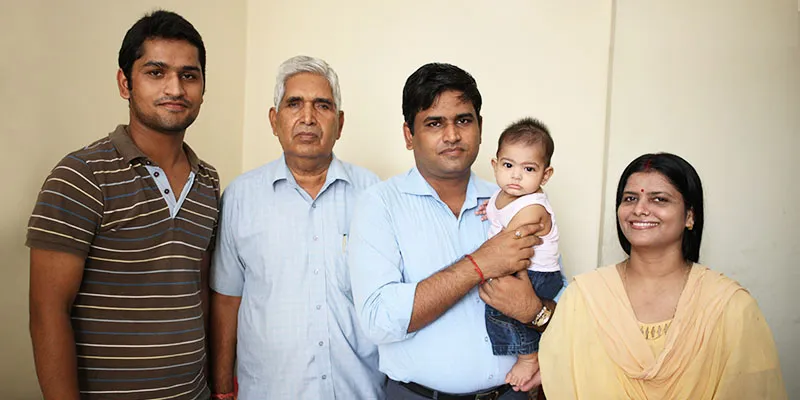
Besides the early childhood lesson, Shivanth was also greatly influenced by Harivansh Rai Bachchan’s ‘Madhushala’ which was introduced to him surprisingly by his Sanskrit teacher in school. Raah pakad tu ek chala-chal paa jaayega madhushaala (choose one path and stick to it, you are sure to find your destination). “Bas meine apne liye ek raah pakad le aur mein chalaa ja raha hun (I have chosen one path for myself and I am walking on that).”
Amar Jawan Jyoti
Tomorrow, before the grand parade of Republic Day begins, as tradition dictates Prime Minister Narendra Modi will lay a floral wreath at the Amar Jawan Jyoti, a memorial to unknown soldiers at India Gate, and will observe two minutes of silence in their memory. A memory to be cherished forever.
(While researching for the story I came across this gem. A movie clip in which Udham Singh acted:
http://newseastwest.com/indian-martyr-udham-singh-acted-in-two-hollywood-films/)







